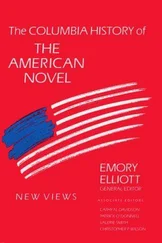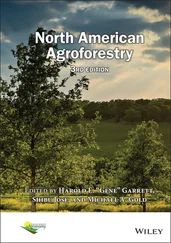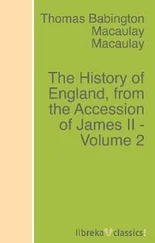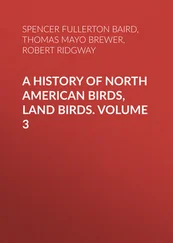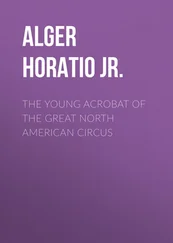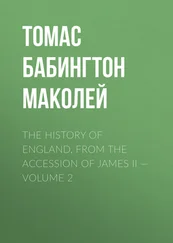Robert Ridgway - A History of North American Birds, Land Birds. Volume 1
Здесь есть возможность читать онлайн «Robert Ridgway - A History of North American Birds, Land Birds. Volume 1» — ознакомительный отрывок электронной книги совершенно бесплатно, а после прочтения отрывка купить полную версию. В некоторых случаях можно слушать аудио, скачать через торрент в формате fb2 и присутствует краткое содержание. Жанр: foreign_antique, Биология, foreign_edu, на английском языке. Описание произведения, (предисловие) а так же отзывы посетителей доступны на портале библиотеки ЛибКат.
- Название:A History of North American Birds, Land Birds. Volume 1
- Автор:
- Жанр:
- Год:неизвестен
- ISBN:нет данных
- Рейтинг книги:3 / 5. Голосов: 1
-
Избранное:Добавить в избранное
- Отзывы:
-
Ваша оценка:
- 60
- 1
- 2
- 3
- 4
- 5
A History of North American Birds, Land Birds. Volume 1: краткое содержание, описание и аннотация
Предлагаем к чтению аннотацию, описание, краткое содержание или предисловие (зависит от того, что написал сам автор книги «A History of North American Birds, Land Birds. Volume 1»). Если вы не нашли необходимую информацию о книге — напишите в комментариях, мы постараемся отыскать её.
A History of North American Birds, Land Birds. Volume 1 — читать онлайн ознакомительный отрывок
Ниже представлен текст книги, разбитый по страницам. Система сохранения места последней прочитанной страницы, позволяет с удобством читать онлайн бесплатно книгу «A History of North American Birds, Land Birds. Volume 1», без необходимости каждый раз заново искать на чём Вы остановились. Поставьте закладку, и сможете в любой момент перейти на страницу, на которой закончили чтение.
Интервал:
Закладка:
a. Cypseli.Palate ægithognathous. Wings lengthened in their terminal portions, abbreviated basally, with the first primary not reduced. Tail of ten rectrices. Bill fissirostral or tenuirostral. Feet never zygodactyle nor syndactyle, small, weak, scarcely fitted for locomotion; hallux often elevated or lateral or reversed; front toes usually webbed at base, or with abnormal ratio of phalanges in length and number, or both. Sternum deep-keeled, usually entire or else doubly notched or perforate. Syringeal muscles not more than one pair.
b. Cuculi.Palate desmognathous. Wings not peculiar in brevity of proximal or length of distal portions, and with first primary not reduced. Tail of eight to twelve rectrices. Bill of indeterminate form, never cered; tongue not extensile. Feet variously modified by versatility or reversion of either first, second, or fourth toes, or by cohesion for a great distance of third and fourth, or by absence or rudimentary condition of first or second; often highly scansorial, rarely ambulatorial. Syringeal muscles two pairs at most.
c. Pici.Palate “exhibiting a simplification and degradation of the ægithognathous structure” (Huxley); wings bearing out this passerine affinity in the common reduction of the first primary and the restriction of the greater coverts. Tail of ten perfect rectrices and usually a supplementary pair. Rostrum hard, straight, narrow, subequal to head, with commonly extensile and vermiform but not furcate tongue. Feet highly scansorial. Fourth toe permanently reversed; basal phalanges of toes abbreviated. Sternum doubly notched. Salivary glands highly developed. Hyoidean apparatus peculiar.
C. PSITTACI.Bill enormously thick, short, high, much arched from the base, the upper mandible strongly hooked at the end, cered at base, and freely movable by complete articulation with the forehead, the under mandible with short, broad, truncate symphysis. Feet permanently zygodactyle by reversion of the fourth toe, which articulates by a double facet. Tarsi reticulate. Syrinx peculiarly constructed of three pairs of intrinsic muscles. Tongue short, thick, fleshy. Sternum entire or fenestrate. Clavicles weak, defective, or wanting. Orbit more or less completed by approach or union of postorbital process and lachrymal. Altricial; psilopædic.
D. RAPTORES.Bill usually powerful, adapted for tearing flesh, strongly decurved and hooked at the end, furnished with a cere in which the nostrils open. Feet strongly flexible, with large, sharp, much curved claws gradually narrowed from base to tip, convex on the sides, that of the second toe larger than that of the fourth toe, and the hinder not smaller than the second one. Feet never permanently zygodactyle, though fourth toe often versatile; anterior toes commonly with one basal web; hallux considerable and completely incumbent (except Cathartidæ ). Legs feathered to the suffrago or beyond. Rectrices twelve (with rare exceptions); primaries sinuate or emarginate (with rare exceptions). Sternum singly or doubly notched or fenestrate. Palate desmognathous. Carotids double. Syrinx wanting or developed with only one pair of muscles. Altricial; the young being weak and helpless, yet ptilopædic, being downy at birth.
E. COLUMBÆ.Bill straight, compressed, horny at the vaulted tip, which is separated by a constriction from the soft membranous basal portion. Nostrils beneath a soft, tumid valve. Tomia of the mandibles mutually apposed. Frontal feathers sweeping in strongly convex outline across base of upper mandible. Legs feathered to the tarsus or beyond. Hallux incumbent (with few exceptions), and front toes rarely webbed at base. Tarsus with small scutella in front, or oftener reticulate, the envelope rather membranous than corneous. Head very small. Plumage without after-shafts. One pair of syringeal muscles. Sternum doubly notched, or notched and fenestrate on each side. Carotids double. Palate schizognathous. Monogamous, and highly altricial and psilopædic.
F. GALLINÆ.Bill generally short, stout, convex, with an obtuse vaulted tip, corneous except in the nasal fossa, and without constriction in its continuity. Nostrils scaled or feathered. Tomia of upper mandible overlapping. Frontal feathers forming re-entrant outline at the base of upper mandible. Legs usually feathered to the tarsus or beyond. Hallux elevated, with few exceptions (e. g. Cracidæ and Megapodidæ ), smaller than the anterior toes, occasionally wanting (as in the Hemipods). Tarsus, when not feathered, generally broadly scutellate. Front toes commonly webbed at base. Claws blunt, little curved. Wings strong, short, and concavo-convex. Rectrices commonly more than twelve. Head small. Plumage usually after-shafted. Carotids double (except Turnicidæ and Megapodidæ ). No intrinsic syringeal muscles. Sternum very deeply, generally doubly, notched. Palate schizognathous. Chiefly polygamous. Præcocial and ptilopædic.
G. LIMICOLÆ.Tibiæ bare of feathers for a variable (sometimes very slight) distance above the suffrago. Legs commonly lengthened, sometimes excessively so, and neck usually produced in corresponding ratio. Tarsi scutellate or reticulate. Toes never coherent at base; cleft, or united for a short distance by one or two small movable basal webs (palmate only in Recurvirostra , lobate only in Phalaropodidæ ). Hallux always reduced, obviously elevated and free, or wanting; giving a foot of cursorial character. Wings, with few exceptions, lengthened, pointed, and flat; the inner primaries and outer secondaries very short, forming a strong re-entrance on the posterior border of the wing. Tail shorter than the wing, of simple form, and of few feathers, except in certain Snipes. Head globose, sloping rapidly down to the contracted base of the bill, completely feathered (except Philomachus ♂). Gape of bill short and constricted; tip usually obtuse; bill weak and flexible. Rostrum commonly lengthened, and more or less terete and slender; membranous wholly or in great part, without hard cutting edges. Nostrils narrow, placed low down, entirely surrounded with soft skin; nasal fossæ extensive. Palate schizognathous. Sternum usually doubly, sometimes singly, notched. Carotids double. Pterylosis of a particular pattern. Nature præcocial and ptilopædic. Comprising the “Plover-Snipe” group; species of medium and small size, with never extremely compressed or depressed body; more or less aquatic, living on plains and in open places, usually near water, nesting on the ground, where the young run freely at birth.
H. HERODIONES.Tibiæ naked below. Legs and neck much lengthened in corresponding ratio. Toes long, slender, never coherent at base, where cleft, or with movable basal webbing. Hallux (as compared with that of the preceding and following group) lengthened, free, and either perfectly incumbent or but little elevated, with a large claw, giving a foot of insessorial character. Wings commonly obtuse, but broad and ample, without marked re-entrance on posterior border, the intermediate remiges not being much abbreviated. Tail short and few-feathered. Head narrow, conico-elongated, gradually contracting to the large, stout base of the bill; the loral and orbital region, or the whole head, naked. Gape of the bill deeply fissured; tip usually acute; tomia hard and cutting. Bill conico-elongate, always longer than the head, stout and firm. Nostrils small, placed high up, with entirely bony and horny, or only slightly membranous, surroundings. Pterylosis nearly peculiar in the presence, almost throughout the group, of powder-down tracts, rarely found elsewhere; pterylæ very narrow. Palate desmognathous. Carotids double. Altricial. Comprising the Herons, Storks, Ibises, etc. (not Cranes). Species usually of large stature, with compressed body and very long S-bent neck; perching and nesting usually in trees, bushes, or other high places near water; young hatching weak, scarcely feathered, and reared in the nest.
Читать дальшеИнтервал:
Закладка:
Похожие книги на «A History of North American Birds, Land Birds. Volume 1»
Представляем Вашему вниманию похожие книги на «A History of North American Birds, Land Birds. Volume 1» списком для выбора. Мы отобрали схожую по названию и смыслу литературу в надежде предоставить читателям больше вариантов отыскать новые, интересные, ещё непрочитанные произведения.
Обсуждение, отзывы о книге «A History of North American Birds, Land Birds. Volume 1» и просто собственные мнения читателей. Оставьте ваши комментарии, напишите, что Вы думаете о произведении, его смысле или главных героях. Укажите что конкретно понравилось, а что нет, и почему Вы так считаете.

